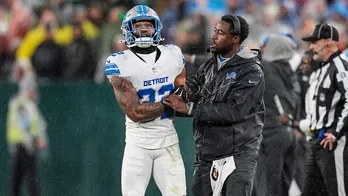How government’s TOPS helped athletes deliver at the Tokyo Olympics
Perception: Indian athletes make it on their own, despite the system.  PREMIUM
PREMIUM
Reality: That ship sailed a long time back. Almost all of India’s athletes at Tokyo came through a system.
Perception: Public/private partnership is responsible for India’s 7 medals and India’s medal quest was supported by corporates.
Reality: This is the story of the tip and the iceberg. A realistic financial split of funding of elite athletes is 95-5 or 90-10 with the government doing the heavy lifting. But when it comes to taking credit, the ratio is flipped—a disproportionate 95% in favour of non-government.
Before diving into details, hit pause and rewind to 2014, when the TOP scheme was launched to fast track India’s push for Olympic medals. As advisor to the ministry of sports, I framed TOPS, together with my colleague Nandan Kamath, who coined its name—Target Olympic Podium. The objective was to put medal winners on the podium, not just hand out boarding cards to athletes participating in the Olympics.
The need for this intervention was obvious. Before Rio, India’s Olympic preparation was fractured and unfocused, and a coherent plan was missing. Elite athletes lacked that cutting edge support for training and preparation, and this resulted in frustration and shattered hopes. An administrative surgical strike was required because the Teams Wing of SAI failed to meet the needs of elite athletes.
Broken down to basics, the TOP scheme is simple. Reputed sportspersons to identity potential medal winners by an objective process, and selected athletes guaranteed complete support through customised programmes delivered professionally bypassing bureaucratic delays.
The TOPS faced several challenges. An unenthusiastic SAI decided to pull the handbrake, apprehensive it could lose its turf. Putting together the ‘athlete only’ selection committee was not easy because many legends were reluctant to join what they cynically considered another Government initiative bound by red tape.
But the ‘getting involved hesitancy’ was overcome and a stellar athlete identification committee assembled to kick start TOPS: Abhinav Bindra, Gopichand, Mary Kom, Anju Bobby George, Manisha Malhotra. Not to forget, Rahul Dravid, an outstanding sportsperson with deep understanding of what it takes to succeed at the very top. The committee was chaired by Anurag Thakur (now the minister of sports), some officials sat on its board and I was the secretary/convenor who put up recommendations after background research and followed up on decisions.
Athletes were picked on the basis of rigorous measurable criteria, after inviting inputs from national coaches and experts. Selection processes are often contaminated by recommendations but the stature of the TOPS selectors ensured integrity was maintained and the chairman absorbed pressure like a good opening batsman.
Launching TOPS was only half the battle—the bigger challenge was implementation. The proposal was to create an independent, empowered body as a bridge between the ministry and the chosen athletes with administrative and financial powers. This to prevent delays because sport is 24/7 and demands speedy decision making whereas the government goes out of network area from Friday afternoon to midday Monday. However, that efficient delivery system did not happen and athletes complained about an unresponsive system where wheels moved in slow motion.
Despite this, TOPS was a great step forward; not exactly Bob Beamon’s monstrous leap but a positive beginning. Since its stuttering start in 2014, TOPS has evolved, led ably the past four years by Commander Rajagopalan, who received support from forward looking ministers Rajyavardhan Singh Rathore and Kiren Rijiju. Its scope has expanded to include a development squad of younger athletes with an eye on future Olympics. There is greater consultation with other stakeholders IOA and the federations. The TOPS team is in closer touch with athletes who now receive a monthly cash stipend which was recommended in the initial stage but actioned much later.
It is largely due to TOPS that our athletes in Tokyo were well prepared and pretty much provided everything they needed. But TOPS has to streamline delivery and create stronger bonds with the athletes. This is a big challenge because the government is distant, impersonal and unemotional whereas top level sport requires not only resources but the caring human touch.
It’s this gap that creates an opportunity for not-for-profit sports management companies to become part of the journey. Their funding contribution is negligible and perhaps not required because India has the resources to invest in its elite athletes. Yet they have a role to play in providing skills that the government cannot muster as facilitators and enablers. This said the noise about private sports companies as game changers and flag-bearers of Indian sport is a stretch.
TOPS too should reset and adjust to the changed ecosystem. If India has to win more than seven medals in the next two Olympics in the next seven years, it must be liberated from interference to avoid delays and have a data driven process for selection of athletes.
One tantalising prospect: TOPS as a standalone commercial entity in the future.
(The writer is a former India team manager and long-time cricket official)
Experience unrestricted digital access with HT Premium
Explore amazing offers on HT + Economist Start 14 Days Free Trial Already Subscribed? Sign In
Disclaimer: The copyright of this article belongs to the original author. Reposting this article is solely for the purpose of information dissemination and does not constitute any investment advice. If there is any infringement, please contact us immediately. We will make corrections or deletions as necessary. Thank you.







